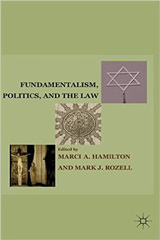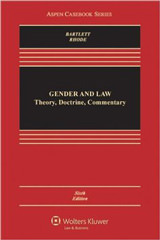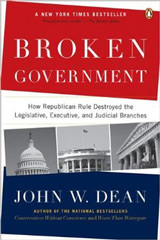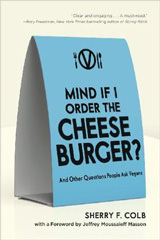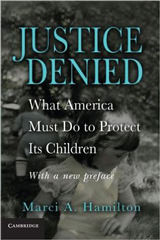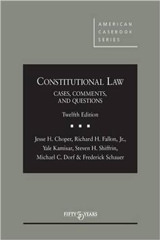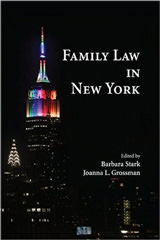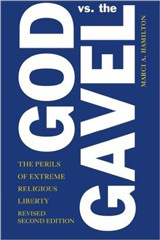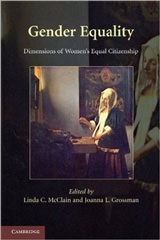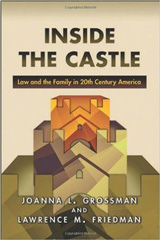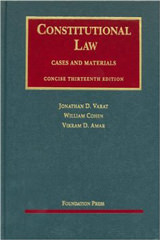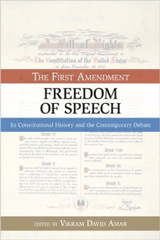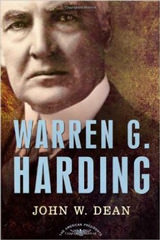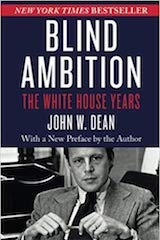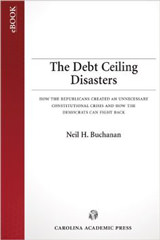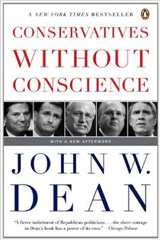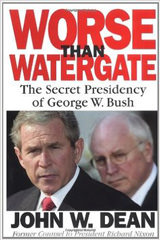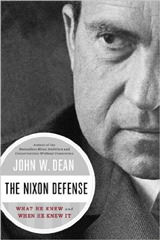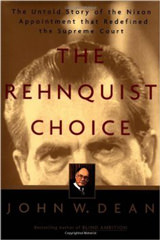Justia columnist and Cornell law professor Michael Dorf comments on the law applicable to the forced feeding, via tubes, of those Guantanamo detainees who refuse to eat, as they are on a hunger strike, and are becoming dangerously weak. Human rights groups condemn the forced feeding as cruel, but the government says that it is better than the detainee’s dying. With U.S. law unclear on the force-feeding issue as it related to detainees, Dorf analyzes the situation, citing two relevant Supreme Court precedents and other legal sources that might shed light on the issue. He also suggests that the detainees’ best hope, in this situation, might be to invoke international law, though their chances of prevailing will still be slim.
Justia columnist and attorney Julie Hilden comments on a New Mexico free speech case, in which the U.S. Court of Appeals for the Tenth Circuit ruled against students’ First Amendment claims, among other claims that their attorneys had brought. Hilden argues that the students’ First Amendment claims were valid, and should have been upheld by the court. She also raises an interesting wrinkle regarding the Tinker test for speech in public schools: What if the speaker is not the disruptor of the school environment, and other students are, but the seed of the other students’ disruption did come from the speaker?
In Part Two of a two-part series of columns regarding legal issues relating to Proposition 8, Justia columnist and U.C., Davis law professor Vikram Amar comments on various scenarios relating to the Proposition that may or may not come to pass. The scenarios include a number of different ways in which Judge Walker’s injunction might be read.
Justia columnist and attorney David Kemp discusses Miranda warnings and the proposed reliance on the “public safety” exception in the case of the suspected Boston Marathon bomber. Kemp first describes the Supreme Court’s seminal decision in Miranda v. Arizona, as well as the subsequently established public safety exception. Kemp cautions that despite the characterization by some authorities of the exception as a carte blanche to question criminal suspects in blatant disregard of their constitutional rights, the exception should be preserved as an evidentiary rule employed only by impartial courts, not by interrogating officers.
Justia columnist and Cornell law professor Sherry Colb comments on the recent Supreme Court Fourth Amendment case concerning the constitutionality of the police’s conducting a warrantless dog sniff on the front porch of a private house in order to detect drugs. Colb analyzes both the majority and concurring opinions from the High Court, and explains why the drugs that were found by the police were suppressed, so that they could not be admitted into evidence in a criminal case against the defendant, Jardines. She also predicts the result that will follow when a similar, but not identical, Fourth Amendment case arises in the future, as it surely will.
Justia columnist and former counsel to the president John Dean comments on the recent controversy over the recording of Senator Mitch McConnell's campaign. Though some have compared the incident to Watergate, and suggested that the recording was illegal, Dean contends that neither the Watergate comparison nor the suggestion of illegality is accurate, and explains exactly why.
Justia columnist and attorney Julie Hilden writes in opposition to Ag-Gag laws, which penalize those who (1) covertly take videos of abuse at facilities where animals are held; and/or (2) apply for a job at such a facility without revealing that they are affiliated with an animal rights group. She also comments on Duke law professor Jed Purdy’s argument in a recent New York Times Op Ed that webcams should be placed in slaughterhouses and other animal facilities, because Purdy doesn’t go further to advocate the use of such cameras to make slaughterhouses a thing of the past.
Justia columnist and U. Washington law professor Anita Ramasastry discusses Instragram’s issue with users’ rating the appearance of young girls in beauty pageants online, and leaving comments both positive and negative. Ramasastry notes that such pageants may raise legal issues and privacy concerns and may trigger issues under COPPA, the Children’s Online Privacy Protection Act.
Justia columnist and Cardozo law professor Marci Hamilton comments on two recent developments: (1) a new kind of state-level religious freedom restoration act (RFRA) that omits the requirement of a substantial burden upon the plaintiff's religious conduct; a mere burden is enough under this new kind of RFRA; (2) the deeply disappointing nature of the Pennsylvania Task Force Legislative Package to protect children, which omitted child-sex-abuse statute of limitations reform, and failed to protect children from medical neglect by faith-healing parents.
Justia columnist and Cornell law professor Michael Dorf comments on a set of key affirmative action issues that the Supreme Court may address this term and/or the next. The programs at issue include affirmative action in state public higher education, employment, and contracting. As Dorf notes, the Michigan affirmative action case that the Court will address is more complicated than it may at first seem, in part because Court precedents establish limits on how a state or local government may go about eliminating or preventing laws that benefit racial minorities. Dorf also notes that an issue that is important here also crops up in the Prop 8 case currently before the Court: the issue of the import of giving and then taking away rights.
Justia columnist and Hofstra law professor Joanna Grossman comments on two states’ decisions to pass abortion laws despite the fact that under U.S. Supreme Court precedent, it is very clear that these new laws are unconstitutional. Grossman explains the relevant tenets of constitutional law regarding abortion, and details exactly why both North Dakota’s and Arkansas’s laws flout the U.S. Supreme Court’s precedents. Grossman also covers other abortion laws that have been passed by state legislatures despite their very clear unconstitutionality, and notes that the new laws do not gibe with public opinion regarding abortion rights.
Justia columnist and attorney Julie Hilden comments on a recent school speech decision from the U.S. Court of Appeals for the Third Circuit. The case involved a fifth grader who had sought to invite her classmates to her church's Christmas party. The court invoked the Tinker test, which asks whether student speech causes substantial disruption in the school's setting. The case also raised the intriguing question of how old students need to be to have their speech in the school setting protected by the Tinker precedent.
Justia columnist and U.C., Davis law professor Vikram David Amar comments on the standing issues, as well as some other issues, that were discussed by the U.S. Supreme Court’s Justices in their recent oral argument regarding Proposition 8, the California measure that bans same-sex marriage. In particular, Amar discusses whether the proposition’s sponsors are the ones who should defend it in court, concluding that they are not. He adds, as well, that denying the sponsors standing will not weaken the initiative device. Moreover, Amar notes that state law could authorize sponsors to defend initiatives in the future, but the authorization must be done carefully, clearly, and in a way that is visible to voters. Amar also considers the possibility that the Proposition 8 case will ultimately be dismissed by the Supreme Court as having been improvidently granted.
In Part Two of a two-part series of columns on the Supreme Court case of Maryland v. King, Justia columnist and Cornell law professor Sherry Colb continues her analysis of the case, which raises questions about the Fourth Amendment significance of DNA collection from arrestees, in light of the government interests and privacy entitlements that are at stake when a person is taken into custody. Part One of this series appeared on March 20, here on Justia’s Verdict.
In Part One in a two-part series of columns relating to the pending Supreme Court case Maryland v. King, Justia columnist and Cornell law professor Sherry Colb considers the Fourth Amendment significance of DNA collection from arrestees, in light of the government interests and privacy entitlements that are at stake when a person is taken into custody. Part Two of this series will appear next Wednesday, March 27.
Justia columnist and attorney Julie Hilden comments on Hawaii’s Steven Tyler Act, which seeks to attract more celebrities to Hawaii by addressing the paparazzi problem for those celebrities who may want to vacation there—or have a house there, as well-known musician Steven Tyler does. Hilden contends that the Act raises two key First Amendment issues—one regarding failed attempts to photograph celebrities, and another regarding how much consideration should have to be exchanged to trigger a violation of the statute.
Justia columnist Joanna Grossman and Justia guest columnist Leon Friedman, both Hofstra law professors, comment on the landmark Supreme Court case of Gideon v. Wainright, which established the right to an attorney for those who are facing felony charges, and who would not otherwise be able to afford a lawyer. The column is timely, as the Gideon precedent is now fifty years old. In their column, Grossman and Friedman describe the state of the law before the ruling in Gideon, note the arguments that persuaded the Court to declare a right of appointed counsel for those who could not afford counsel, and explain the meaning of the ruling.
Justia columnist and Cardozo law professor Marci Hamilton predicts that the new Pope, formerly the Archbishop of Buenos Aires, will be no more successful than his predecessor in effectively addressing the Catholic Church’s problem with clergy child sex abuse. In making her case, Hamilton cites the name the new Pope chose, Francis for St. Francis Xavier, not St. Francis of Assisi; and the fact that he is a Jesuit—and thus a member of an order that despite the respect it claims still has clergy child abuse problems and problems with related cover-ups. Hamilton also points out that Pope Francis—unlike Cardinal Oullet of Canada, another top contender—has not been an outspoken critic of clergy child abuse. For these and other reasons, Hamilton predicts that true reform in this area will only come from the legal system, not the Church.
Justia columnist and Cornell law professor Michael Dorf comments on Justice Scalia’s arguments regarding what Scalia calls “racial entitlements,” and the Voting Rights Act. As Dorf notes, these issues came up during the oral argument in the case of Shelby County v. Holder. Moreover, Dorf notes, Scalia had earlier raised these arguments both when he was a law professor, and repeatedly in his opinions on the Court. But, Dorf points out, Scalia’s references in the past appeared in affirmative action cases, whereas this reference appeared in his discussion of Section 5 of the Voting Rights Act, which is not an affirmative action provision; rather it deals with election rules in jurisdiction with a history of discriminatory voting rules. Dorf questions whether Scalia’s extension of his own “racial entitlements” logic is valid in this context.
Justia columnist and Cornell law professor Sherry Colb comments on a discrimination case in which the Cincinnati Children’s Hospital Medical Center fired a Customer Service Representative, Sakile S. Chenzira, for refusing to get a seasonal flu vaccine, in contravention of hospital policy. Chenzira refused the vaccine because she is a vegan and the vaccine is produced in chicken eggs. After her firing, Chenzira went to federal district court, arguing that her firing violated her right to be free of religious discrimination. The court denied the hospital’s motion to dismiss the case, and decided to hear the evidence. Colb describes in detail what it means to be a vegan, and explains why, for some vegans, the decision whether or not to be vaccinated is a difficult one. She also discusses when, under federal law, a belief system counts as a religion, noting that veganism ought to qualify under that definition. Colb also offers a prediction as to the likely outcome of Ms. Chenzira’s case.























